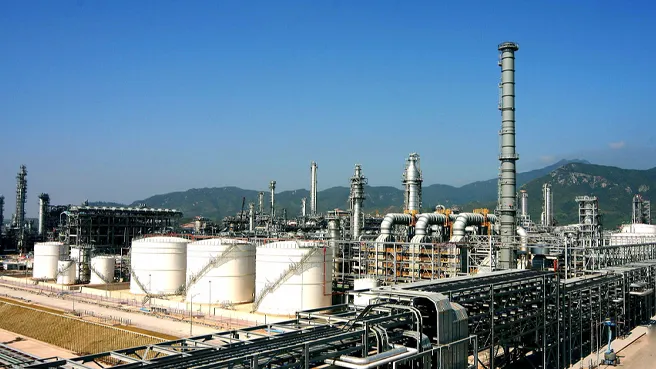
acetone and rubber
The Relationship Between Acetone and Rubber An Explored Nexus
Acetone, a colorless and volatile organic compound, is commonly known for its use as a solvent in various applications, including nail polish remover, paint thinners, and cleaning agents. Its chemical formula is C3H6O, and it is classified as a ketone due to the presence of a carbonyl group. On the other hand, rubber, a versatile and widely used material, is made from natural or synthetic polymers that exhibit elasticity. The interaction between acetone and rubber is significant in multiple industries, ranging from manufacturing to product repair.
Understanding Rubber and Its Types
Rubber can be categorized into two main types natural rubber, derived from the latex of rubber trees, and synthetic rubber, produced through polymerization of monomers. Natural rubber is renowned for its excellent elasticity, resilience, and tensile strength. Synthetic rubber, including styrene-butadiene rubber (SBR) and nitrile rubber (NBR), is engineered to enhance properties such as resistance to temperature, wear, and chemical exposure. Each type of rubber has specific applications, ranging from automotive tires to seals and gaskets.
Acetone as a Solvent
Acetone's ability to dissolve a wide range of substances, including some types of rubber, makes it an essential solvent in various processes. It is often used in laboratories and industrial settings to clean equipment, remove residues, and prepare surfaces for bonding. Because acetone evaporates quickly, it does not leave behind moisture, a crucial factor when working with materials that are sensitive to water, such as rubber.
Effects of Acetone on Rubber
acetone and rubber

While acetone serves as a powerful solvent, its interaction with rubber can lead to detrimental effects, particularly when rubber is exposed to high concentrations or prolonged contact. Acetone can swell, soften, and ultimately degrade certain types of rubber, significantly altering their physical properties. Natural rubber is particularly susceptible to this effect, as acetone can break down the polymer chains, leading to a loss of elasticity and strength. This degradation is a critical consideration in applications where rubber components must maintain their integrity and performance under adverse conditions.
Practical Applications and Considerations
In practical applications, understanding the relationship between acetone and rubber is essential for product design and maintenance. For instance, manufacturers often have to consider the compatibility of rubber materials with solvents like acetone when designing seals, gaskets, and other rubber components in machinery and automotive systems. Water-resistant and chemical-resistant formulations of synthetic rubber, such as NBR, are often favored in environments where contact with acetone is possible.
Additionally, during repairs, acetone might be used to clean parts before applying adhesives or sealants. However, technicians must be cautious about the type of rubber in use, as excessive exposure to acetone can compromise the material’s integrity, leading to failure in seals or joints.
Conclusion
In conclusion, the interaction between acetone and rubber is a multifaceted subject with significant implications for various industries. While acetone serves as an efficient solvent, its effects on rubber can be harmful if not properly managed. Understanding the characteristics of both materials is crucial for engineers and technicians alike to ensure optimal performance and longevity of rubber products. As industries continue to evolve, the need for innovative materials that resist chemical degradation will enhance the ongoing relationship between solvents like acetone and elastic materials like rubber, paving the way for advancements in product durability and performance.
-
Pure Sodium Dichloroisocyanurate Dihydrate | Powerful DisinfectantNewsAug.29,2025
-
Industrial Chemicals: Quality & Purity for Every IndustryNewsAug.28,2025
-
Nitrile Rubber Honoring Strict Production StandardsNewsAug.22,2025
-
Aspartame Ingredients Honoring Food Safety ValuesNewsAug.22,2025
-
Fertilizer for Balanced Plant NutritionNewsAug.22,2025
-
Cyanide Gold Processing with High Purity AdditivesNewsAug.22,2025
-
Formic Acid in Textile Dyeing ApplicationsNewsAug.22,2025
Hebei Tenger Chemical Technology Co., Ltd. focuses on the chemical industry and is committed to the export service of chemical raw materials.
-

view more DiethanolisopropanolamineIn the ever-growing field of chemical solutions, diethanolisopropanolamine (DEIPA) stands out as a versatile and important compound. Due to its unique chemical structure and properties, DEIPA is of interest to various industries including construction, personal care, and agriculture. -

view more TriisopropanolamineTriisopropanolamine (TIPA) alkanol amine substance, is a kind of alcohol amine compound with amino and alcohol hydroxyl, and because of its molecules contains both amino and hydroxyl. -

view more Tetramethyl Thiuram DisulfideTetramethyl thiuram disulfide, also known as TMTD, is a white to light-yellow powder with a distinct sulfur-like odor. It is soluble in organic solvents such as benzene, acetone, and ethyl acetate, making it highly versatile for use in different formulations. TMTD is known for its excellent vulcanization acceleration properties, which makes it a key ingredient in the production of rubber products. Additionally, it acts as an effective fungicide and bactericide, making it valuable in agricultural applications. Its high purity and stability ensure consistent performance, making it a preferred choice for manufacturers across various industries.





